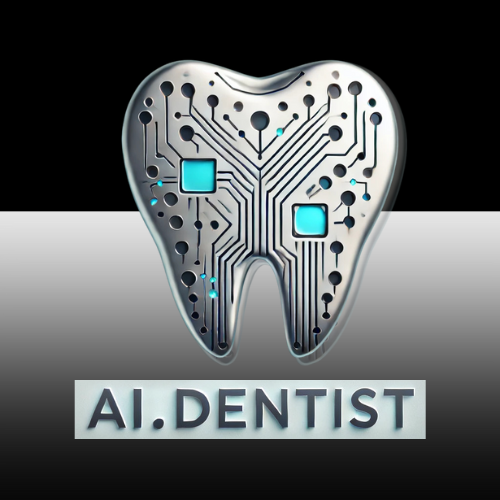How AI is Revolutionizing Dentistry: Key Applications
Artificial intelligence (AI) is transforming dentistry by enhancing diagnostics, streamlining workflows, and improving patient care. From AI-powered imaging to robotic-assisted surgeries, dental professionals now have cutting-edge tools that enhance precision and efficiency. Below, we explore the top AI applications in dentistry and what the future holds.
Table of Contents
- AI-Powered Diagnostics and Treatment Planning
- AI-Driven Robotics for Implant Placement
- AI for Streamlined Administrative Tasks
- AI in Restorative Dentistry and Prosthetics
- AI in Patient Care and Communication
- Additional AI Applications in Dentistry
- The Future of AI in Dentistry
1. AI-Powered Diagnostics and Treatment Planning
AI-driven image analysis is revolutionizing dental diagnostics by improving the accuracy of detecting and diagnosing oral health conditions. Advanced algorithms analyze X-rays, CBCT scans, and panoramic images with unmatched precision.
Enhanced Image Analysis
- Caries Detection: AI identifies early-stage cavities that might be overlooked, enabling preventive treatment.
- Periodontal Disease: AI evaluates bone loss, detects periodontal pockets, and aids in treatment planning.
- Oral Cancer Screening: AI assists in early detection by flagging suspicious lesions on radiographs.
- Dental Anomalies: AI helps identify impacted teeth, supernumerary teeth, and orthodontic concerns.
Personalized Treatment Planning
AI processes patient data, including medical history and imaging, to create tailored treatment plans. For example, AI can predict dental implant success based on bone density, age, and health status.
Popular AI-powered software: Diagnocat, Overjet, Pearl AI
2. AI-Driven Robotics for Implant Placement
Robotic-assisted dental surgery is revolutionizing implant placement, increasing precision and reducing complications.
- Precision & Accuracy: AI-guided robotic systems like Yomi by Neocis help place implants with greater accuracy.
- Reduced Errors: Minimizes surgical risks and improves implant stability.
- Better Outcomes: AI enhances osseointegration and long-term implant success.
3. AI for Streamlined Administrative Tasks
AI-powered automation reduces administrative burdens, allowing dental staff to focus on patient care.
Key Administrative AI Applications
- Virtual Assistants: AI chatbots handle appointment scheduling, reminders, and patient inquiries.
- AI Billing: Automates invoicing, insurance claims, and payment tracking.
- Predictive Analytics: Identifies no-show risks and improves practice efficiency.
4. AI in Restorative Dentistry and Prosthetics
AI is enhancing digital dentistry with smarter design tools and automated workflows.
AI-Driven Innovations in Restorative Dentistry
- CAD/CAM Technology: AI refines crown and bridge designs for a more precise fit.
- 3D Printing Optimization: AI enhances 3D printing for surgical guides and prosthetics.
5. AI in Patient Care and Communication
AI-powered communication tools enhance the patient experience and streamline interactions.
AI-Powered Patient Engagement
- AI Chatbots: Provide real-time oral health advice and appointment scheduling.
- Voice-Activated Charting: Allows hands-free patient record updates.
Additional AI Applications in Dentistry
- Orthodontics: AI predicts tooth movement and refines treatment plans.
- Periodontics: AI assesses bone loss and forecasts gum disease risk.
- Oral Surgery: AI aids in nerve detection and surgical risk assessment.
- Dental Education: AI-driven simulations and VR training enhance learning experiences.
The Future of AI in Dentistry
AI continues to evolve, unlocking new possibilities in dental care. In the coming years, we can expect:
- Enhanced Diagnostic Accuracy: AI will further refine early disease detection.
- Greater Automation: More routine tasks will be handled by AI, improving efficiency.
- Personalized Patient Care: AI will tailor treatments based on individual patient profiles.
- Innovative AI-Driven Treatments: AI will contribute to regenerative therapies and precision drug delivery.
AI is set to redefine modern dentistry, leading to faster diagnoses, streamlined workflows, and superior patient outcomes. As the technology advances, dental professionals can expect even greater improvements in care quality and efficiency.
